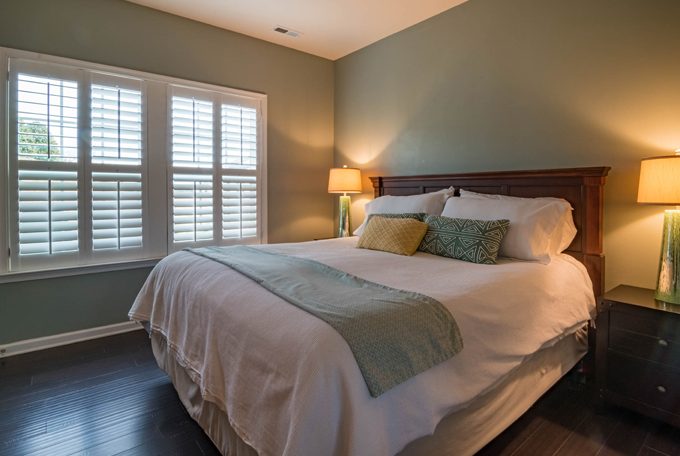Do Blinds Look Good In A Bedroom?
Blinds can look great in a bedroom, yet there are different types of blinds that suit different bedroom types. For example, if the theme in your bedroom involves gold leaf, mood lighting, and velvet, you should stay away from white faux-wood modern-looking blinds and rather go for more opulent-looking Roman blinds. Yet if your bedroom is a minimalistic, airy, and light space, then modern-looking fresh white blinds would probably match your room better.
Bedroom window blinds are available in many different types, which means there is a blind for every type of bedroom when it comes to function and matching up to the environment. When considering the style or blind type, the colours you can choose from, the designs and patterns for certain options, along with the controls or trim you are interested in, “the world is truly your oyster” when it comes to the blinds for your bedroom.
I would like to mention one thing when it comes to style (and others may disagree) is that the range of blinds on offer comes in endless styles, from traditional and period to futuristic or minimalist, which is not the case when it comes to curtains.
Curtains are most certainly available in many options when it comes to styles from the way the curtains fall or the pleat patterns, the tapes and hooks along the top, or whether you prefer tiebacks and/or a pelmet. But curtains have started to look slightly dated (regardless of the theme or style) in specific bedroom types, especially those that feature a more modern style.
One final thought for those that cannot decide between curtains and blinds, is that it is possible to incorporate both. For example, you can choose curtains or decorative voiles for the outside of a window recess, and blinds for the inside. This is an effective way to block 100% external light.
What Type Of Blinds Are Best For A Bedroom If Light Wakes Me Up?
Project Blinds are becoming more popular in both residential and commercial environments and are a great way to provide areas with privacy and shade. The short, but not so useful answer is the project blinds. Yet I am confident that around 99.9% of people living in the UK already know this.
For anyone that doesn’t know much about blackout blinds, these blinds are designed to stop any external light from entering through a material or fabric (and they also stop any inside light from seeping out, which often contributes to “light pollution”.
“Blackout blinds” is a term that is not used to describe the style or model of a blind, but rather references that the blind has sun-deflecting characteristics due to the ability of the material to not let light through (such as blinds made from solid materials such as wood) or when they are made using a specialized blackout coating or lining which also works on blocking out light.
Any blind type can feature the blackout options, yet certain blinds are considered by default as blackout blinds.
If you purchase faux-wood blinds, wooden blinds, or Venetian blinds, they already have blackout abilities (you may still get a bit of light coming through the corners or edges of these blinds). You could also get slight light leakage when you purchase a blind that comes with a cord rather than a ladder tape.
If you decide on vertical blinds, Roman blinds, roller blinds, or night or day blinds, each one of these types is available in a blackout option. However, unless the description of the blind states that the product has blackout abilities, don’t make the mistake of assuming that these blinds will be the blackout type by default.
It is also worth mentioning that certain people do not like blackout blinds, since they find the complete light-blocking effect a bit disorientating. This usually happens upon waking and they don’t have a “natural” indicator of what time of day it is.



